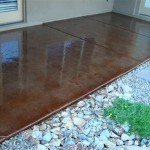Building an Awning Over a Patio
An awning over a patio can provide much-needed shade and protection from the elements, making it a more comfortable and enjoyable space to relax and entertain. While building an awning may seem like a daunting task, it is a project that can be tackled by most do-it-yourselfers with the right materials and a little know-how.
Choosing the Right Awning Material
The first step in building an awning is choosing the right material. There are a number of different materials available, each with its own advantages and disadvantages. Some of the most popular options include:
- Canvas: Canvas is a durable and affordable option that is available in a variety of colors and patterns. However, canvas can fade and mildew over time, so it is important to choose a canvas that is treated for outdoor use.
- Acrylic: Acrylic is a synthetic material that is resistant to fading and mildew. It is also more water-repellent than canvas, making it a good choice for areas that receive a lot of rain.
- Polycarbonate: Polycarbonate is a clear plastic material that is lightweight and durable. It is also UV-resistant, making it a good choice for areas that receive a lot of sunlight.
Planning the Awning
Once you have chosen the awning material, you need to plan the awning. This includes determining the size of the awning, the shape of the awning, and the angle of the awning. The size of the awning will depend on the size of the patio and the amount of coverage you want. The shape of the awning can be simple or complex, depending on your personal preference. The angle of the awning will determine how much shade the awning provides.
Building the Awning Frame
The next step is to build the awning frame. The frame will support the awning material and will need to be strong enough to withstand the weight of the awning and any additional weight, such as snow or wind. The frame can be made from a variety of materials, such as wood, metal, or aluminum. The size and shape of the frame will depend on the size and shape of the awning.
Attaching the Awning Material
Once the frame is built, you can attach the awning material. The awning material can be attached to the frame using a variety of methods, such as screws, nails, or glue. The method you choose will depend on the type of awning material you are using.
Finishing the Awning
The final step is to finish the awning. This includes adding any trim or decorative elements, such as valances or fringe. It also includes sealing the awning to protect it from the elements. The awning can be sealed using a variety of methods, such as paint, sealant, or caulk.

How To Build A Diy Covered Patio

Diy Patio Roof Handybros Youtube

How To Make And Install A Diy Awning Perfect Shade For Patio S1 Ep16 Youtube

Diy Deck Awning Made By Marzipan

Diy Retractable Awnings Sunshade Outdoor Sunsetter

How To Build A Simple Diy Outdoor Awning Posh Living Magazine

Outdoor Awnings How To Build Your Very Own Canvas Etc

Patio Awnings For Your Outdoor Space Global Solariums

Practical And Stylish Awning Ideas For Your Patio

10 Deck Awning Ideas To Create A Shaded Outdoor Space








